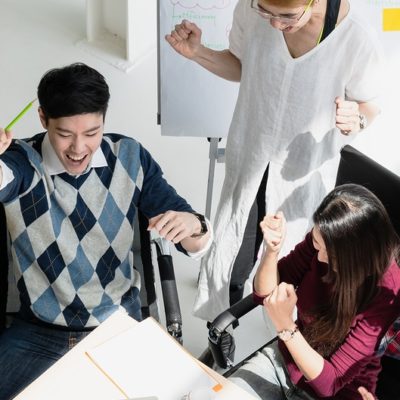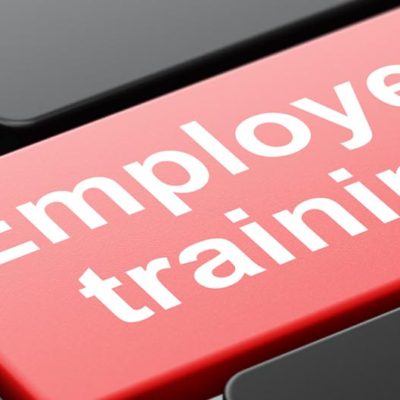What exactly does it mean to learn?
It’s a difficult question to answer and we are still learning how the brain computes information in order to retain it for future use.
But we have ideas that have morphed into laws of learning, and it would be good to see how these laws apply to all learning and development interventions we can instil at work.
We know there are basically two ‘types’ of learning. Both allow us to embed ideas into the long-term memory and allow us to apply the learning in everyday working environments.
1) Associative Learning
This is where we link connections between events, often known as ‘conditioning’. We ‘associate’ an event with the consequences we receive. Operant conditioning occurs when we behave in a certain way and get consequential results. If we practice a certain skill, we learn what results we get from that skill, and retain that knowledge.
2) Observational Learning
Here, we learn by watching another person carry out a task and demonstrating the results obtained. If we watch how a manager runs a meeting, we recognise what works and what doesn’t. If we carry out a role play during a workshop, we take in information concerning the areas practiced.
Based on these two types, we can assess various laws of learning that can assist us in developing our abilities, and their applications in the workplace. Here are
Law of Readiness 
This is often called ‘state management’. If a facilitator is running a programme and a delegate arrives late, having suffered traffic holdups and is hot and sweaty, it will be difficult for them to be in the right ‘state’ to learn anything!
The degree of enthusiasm and concentration people exert will link with their emotional, physical and mental propensity to take learning seriously. Facilitators need to compose a strong purpose, a clear goal and convincing rationale for the learning to be accepted and delegates to be engaged in the learning.
Law of Practice and Exercise 
People learn best when things are practiced, exercised and repeated. The learning occurs when the connection are made between cause and effect. Practice must mean something and show some improvement for it to be seen as beneficial.
The more exposure someone gets to a situation, the more connections neurons can make to see then consequences. More practice in some situations produces muscle memory; more attempts produce greater neuronal connections.
Law of Effect 
Have you ever learned to do something and had a pleasant or satisfying result from learning it?
If we see evidence of progress and feel successful carrying it out, we learn that this is a pleasurable outcome and the learning is embedded deeper than if it was an unpleasant experience or we didn’t achieve the attempted goal.
These ‘effects’ strengthen the connection between what we experience by doing and the ideas learned. We need to ensure we make any learning experience for students both challenging and pleasurable.
Law of Primacy 
First impressions last, as the saying goes. Primacy dictates that what we learn first is embedded best. So, when we start a learning workshop, this is the time when we should strive for a quick ‘learning win’, gaining a head-start with an interactive story or interesting facts relating to the learned subjects. This should not be the time for covering the times of the breaks or where then toilets are or what to do in the event of a fire!
Law of Recency 
If I gave you my mobile number now, and asked you to repeat it, you may remember it immediately and be able to recite it. If I then asked you 60 minutes later, after lots of other interactions, that learning may well be erased.
The ‘recency effect’ shows that the best time to practice a learned idea is a close to the event as possible. Also, we will remember something we learned at the end of a programme more than something learned during the middle period. This compliments the form of memory failure known as ‘transience’, which determines how quickly we forget things over time, unless they are embedded into our long-term memory.
So it’s important that we facilitate learning by restating and re-emphasising the concepts at the close of a learning session so that delegates take away the key points.
Applications of these learning laws
We see the use of these and other laws of learning in facilitated interventions at work.
- Observational and associative learning can be employed in coaching sessions, with ideas immediately applied in the workplace
- Ensure the learner is allowed the time to settle in to a workshop, with refreshments and opportunities to ease themselves into the right learning ‘state’
- Allow chances for learners to practice what they have learned through planned action points, discussions of application and peer networking
- Be mindful of the pleasurable effects of learning when people are in charge of how it’s carried out. Bring some fun elements to bear, so learning is seen as something to look forward to
- Bring key stories and activities to the start of a workshop or coaching session, so the law of primacy is applied. People remember these key points because they are primarily ‘front of mind’
- Leave key points till the end of an interaction so people remember things to take away with them. Recency embeds ideas in the same way as primacy does.
By observing these key principles, deemed laws of learning, we can ensure our learners have a great chance of planting and entrenching what they learn into their long-term memories.

Sean McPheat | 
CEO The MTD Training Group














